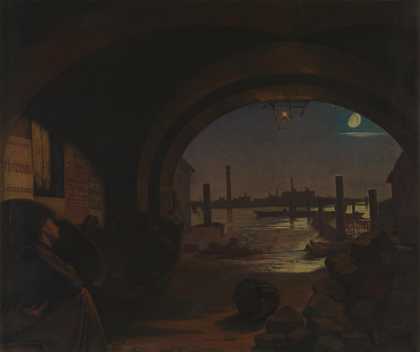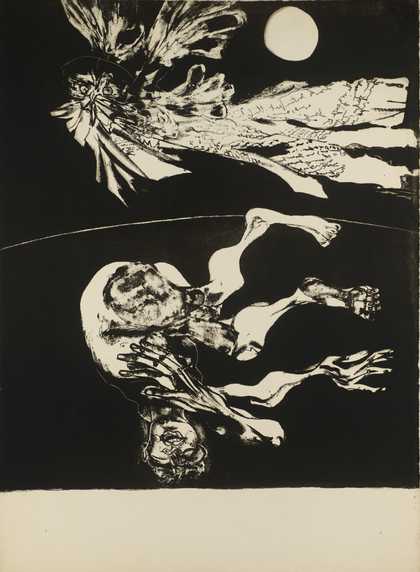Noboru Takayama on Giuseppe Penone’s Tree of 12 Metres 1980–2
An underlying animistic belief within Japanese culture has held that all things, both inanimate and animate, are imbued with spirit, and this belief is still evident in everyday life today. In Shinto shrines and within their grounds there is often a tree that has a sacred significance. It is considered to be the dwelling place of a deity and is worshipped accordingly. Such trees are carefully preserved and revered, but the practice has been undermined in recent years by environmental and economic factors.
In Japanese Shinto as handed down since ancient times, there is a strange festival known as the Onbashirasai, in which a tree is cut down from the deep forest and stripped of its branches and bark, whereupon it acquires an identity as a sacred object known as the onbashira.
Shamans believe that the spirits, or kodama, that dwell in trees are tutelary, serving to protect not just the trees themselves but all manner of beings present within nature. Although each tree in the forest possesses its own vital force, it does not have the power to cast evil spells on people. However, the spirits that support their growth – energy-like beings existing in the middle ground between the material and the sacred worlds – will come to curse those who behave adversely towards the trees.
Lynda Nead on Augustus Leopold Egg’s Past and Present, No. 3 1858

Augustus Leopold Egg
Past and Present, No. 3 (1858)
Tate
A broken and discarded woven basket, useless and abandoned, apparently insignificant, just a piece of detritus washed up by the river, and yet it is at the heart of this painting. Placed centrally under the dark arch, it leads my eye towards the reflected light of the moon and the silvery track of water. Its dark interior points towards the left foreground of the picture and to the figure of a woman huddled by the wooden skeleton of a boat.
How strange that the basket is at the centre of the canvas and she is pushed to the margins. Her face is pale and gaunt; hollow cheeks, staring eyes; a Victorian woman, but one who is located outside all of the prevailing codes of respectable femininity. My gaze picks out details that begin to piece together her story and explain why she is in this situation. Small pale legs protrude from under her rough shawl, and posters on the wall behind her advertise the titles of Haymarket plays: Victims and A Cure for Love, as well as Pleasure Excursions to Paris. So that’s it; she’s a fallen woman, but the only cure for love offered in the painting seems to be the watery grave traced by the track of moonlight reflected in the river. She shares her condition with the basket in the foreground. She has not just fallen, she is an outcast, and there can be no other stage to her decline than suicide.
I read the painting as the artist wished me to. It is possible, however, to read it disobediently, against the grain. Let us imagine she ignores the lure of the water, and that somehow, against the odds, she reconstructs her life and she and her child are happy and safe. I wish it were so.
Alexandra Harris on JMW Turner’s Petworth Park: Tillington Church in the Distance c1828

Joseph Mallord William Turner
Petworth Park: Tillington Church in the Distance (c.1828)
Tate
Have shadows ever fallen on grass quite like this? It’s as if these deer are dabbling at the shallow edge of a river, each delicate body doubled by reflections that quiver and ripple across a smooth surface, improbably elongated and distinct. No, grass is not shiny – not for most of us – but to Turner’s eye the whole park is luminous. There is actually a lake beyond the lawn, carefully positioned by Capability Brown to magnify the evening sun, but Turner dispenses with man-made garden features and makes the land itself a lake. We can almost hear it lapping at the terrace.
Walks in Petworth Park were a treat when I was growing up in West Sussex. My father pointed out that the great flat lawn was austere, that the summer grass was parched, that the tea room was expensive. But because I had a head full of pictures, I felt I was swimming through glowing air. I loved the stern 18th-century proportions, and I loved the fact that – because of Turner – they were always about to deliquesce. Lines were about to become liquid. The ground had been perfected with a spirit level, but it was about to break its bonds and curve upwards, magnetised by the sun.
The picture has many temperatures. All is calm, and yet there is overwhelming power at work here which might suddenly turn savage. I didn’t know it at 15, but I was starting to piece together the imaginative history of light and air.
Iain Sinclair on Ceri Richards’s Do not go gentle into that good night 1965
This 1965 lithograph by Ceri Richards, theatrically stark in black and white, and derived from a late Dylan Thomas poem, was the first artwork I bought and took home. And I’ve lived with it ever since, through a procession of temporary London rooms to a final anchorage in Hackney.
Savage and bardic, this image of a naked, fallen man, spilled on the edge of the world under a brilliant moon, plugged through terminal darkness like a bullet hole in the skull, still feels like the perfect metaphor for the futility of a writer’s life. An owl with unblinking gaze carries off shroud sheets of scribbled texts that will never be completed. ‘Published in eternity,’ as Allen Ginsberg said.
The detail that grabs me is the extreme elongation of prehensile digits, fingers stretched into spaghetti strings by the gravity of a black hole. The feet belong on a creature freshly emerged from the sea and not yet fit for land. The hands are grasping plants. The awkward position of arms and legs suggests a shoreline with protected bays.
The Thomas poem deals with solar flares burning out. The Richards lithograph is hard white light in Beckettian darkness. A nameless corpse dissected in the moon’s laboratory. I don’t know what the words say on the shroud, but they are not taken from the Thomas elegy for his father. And they are being swept away.

